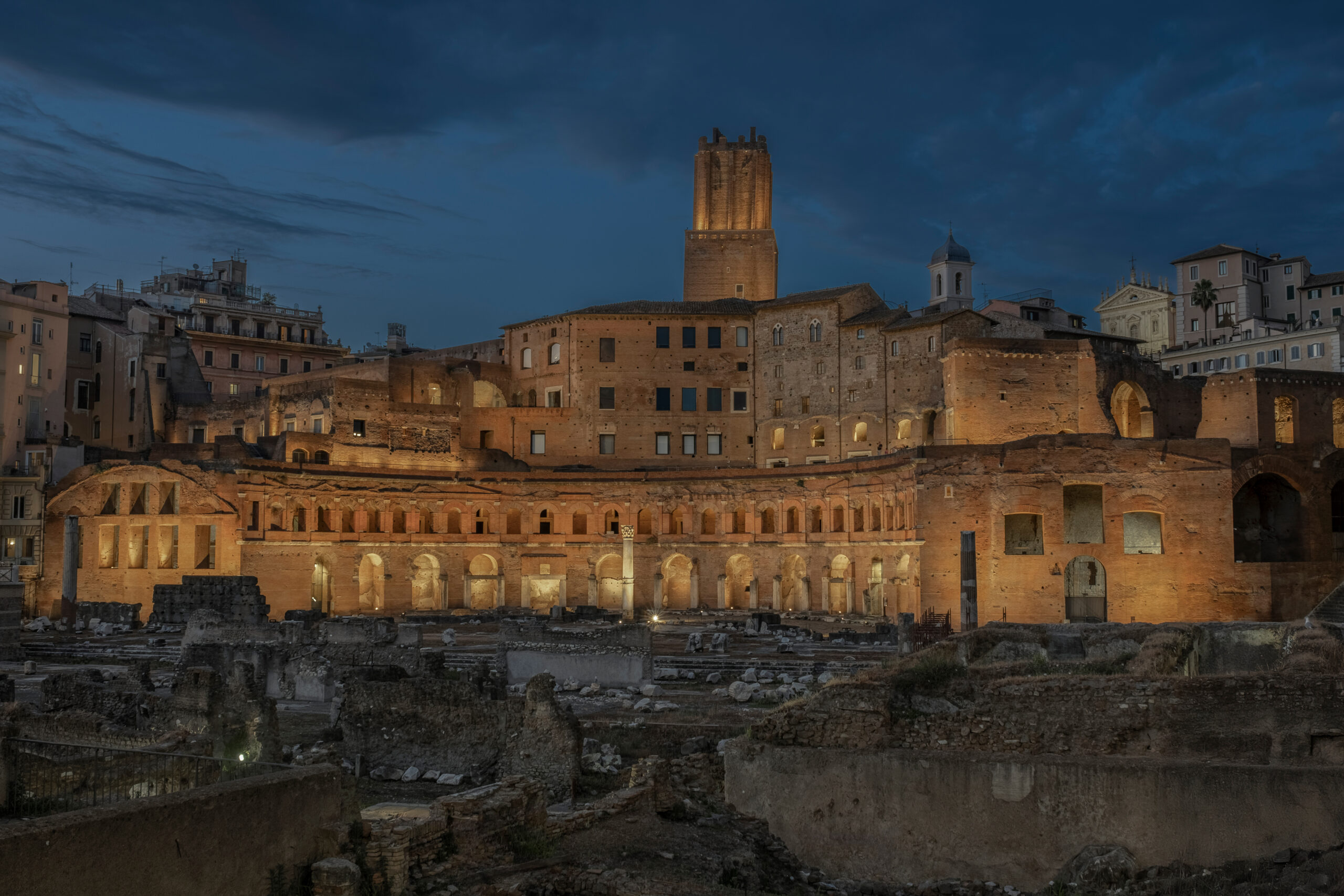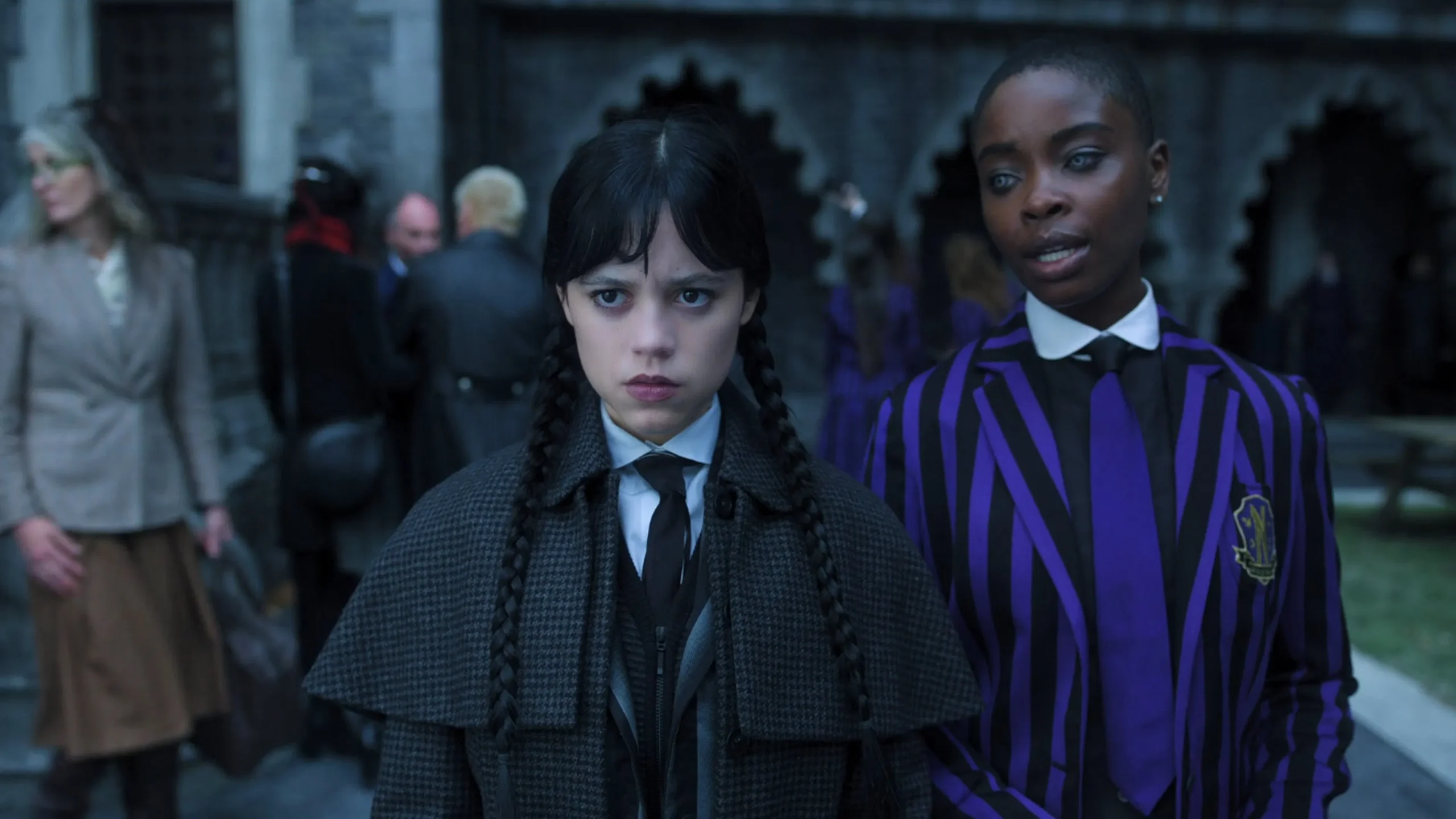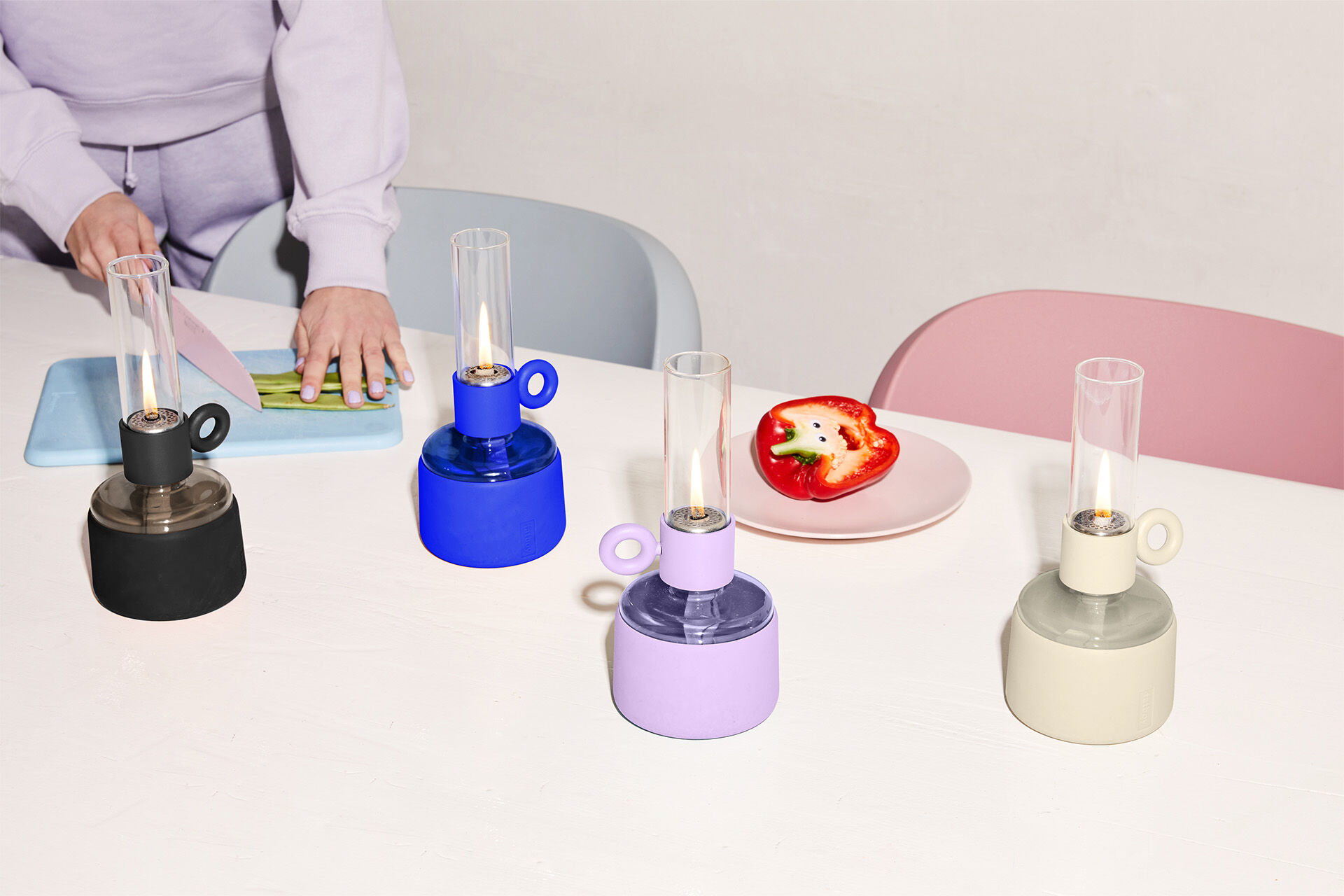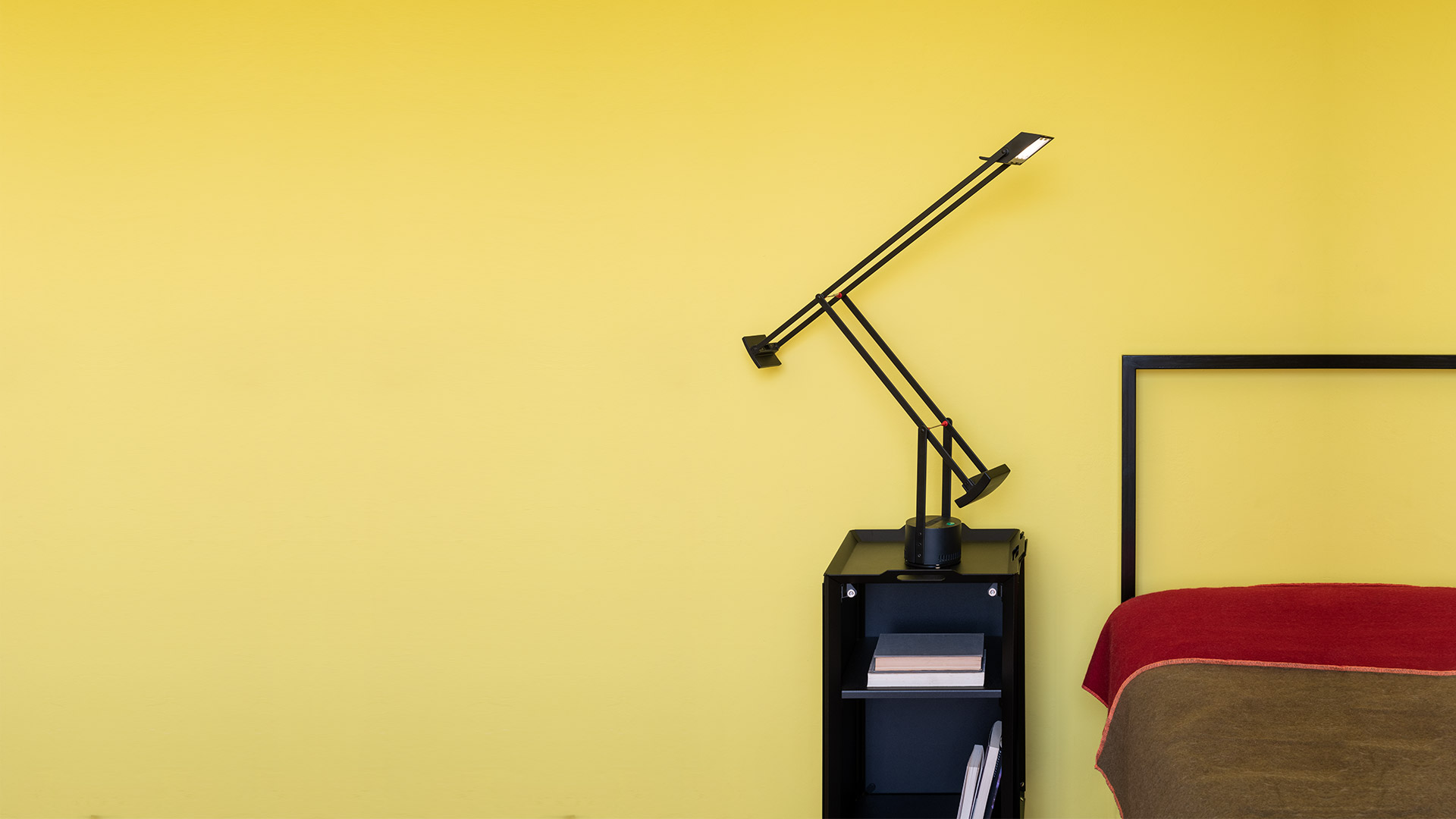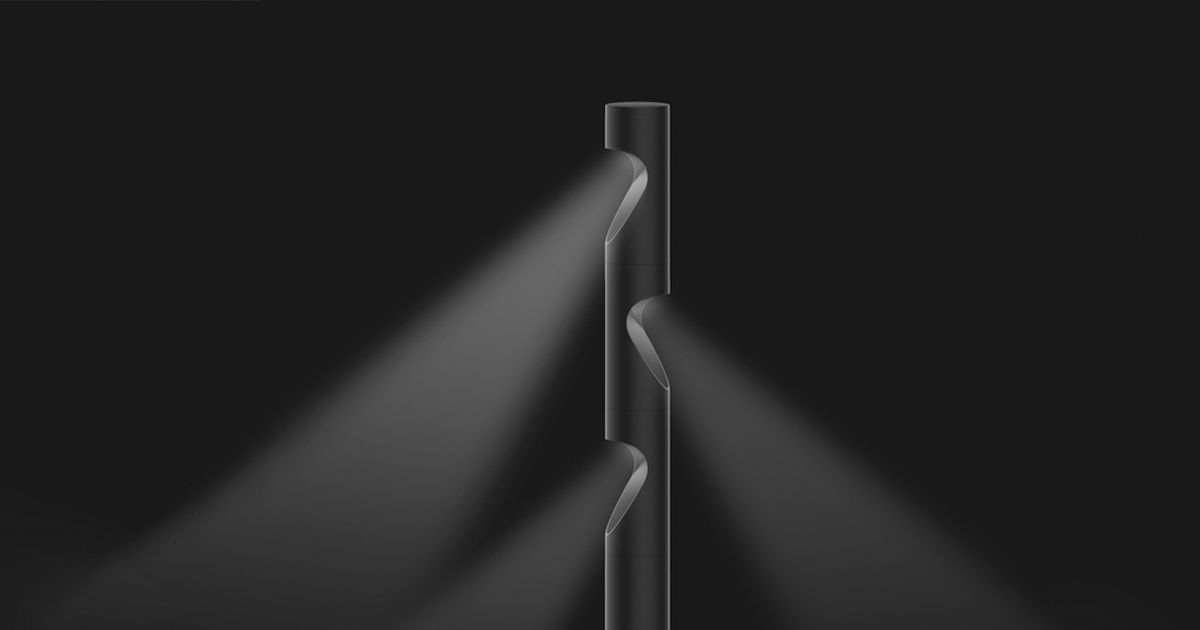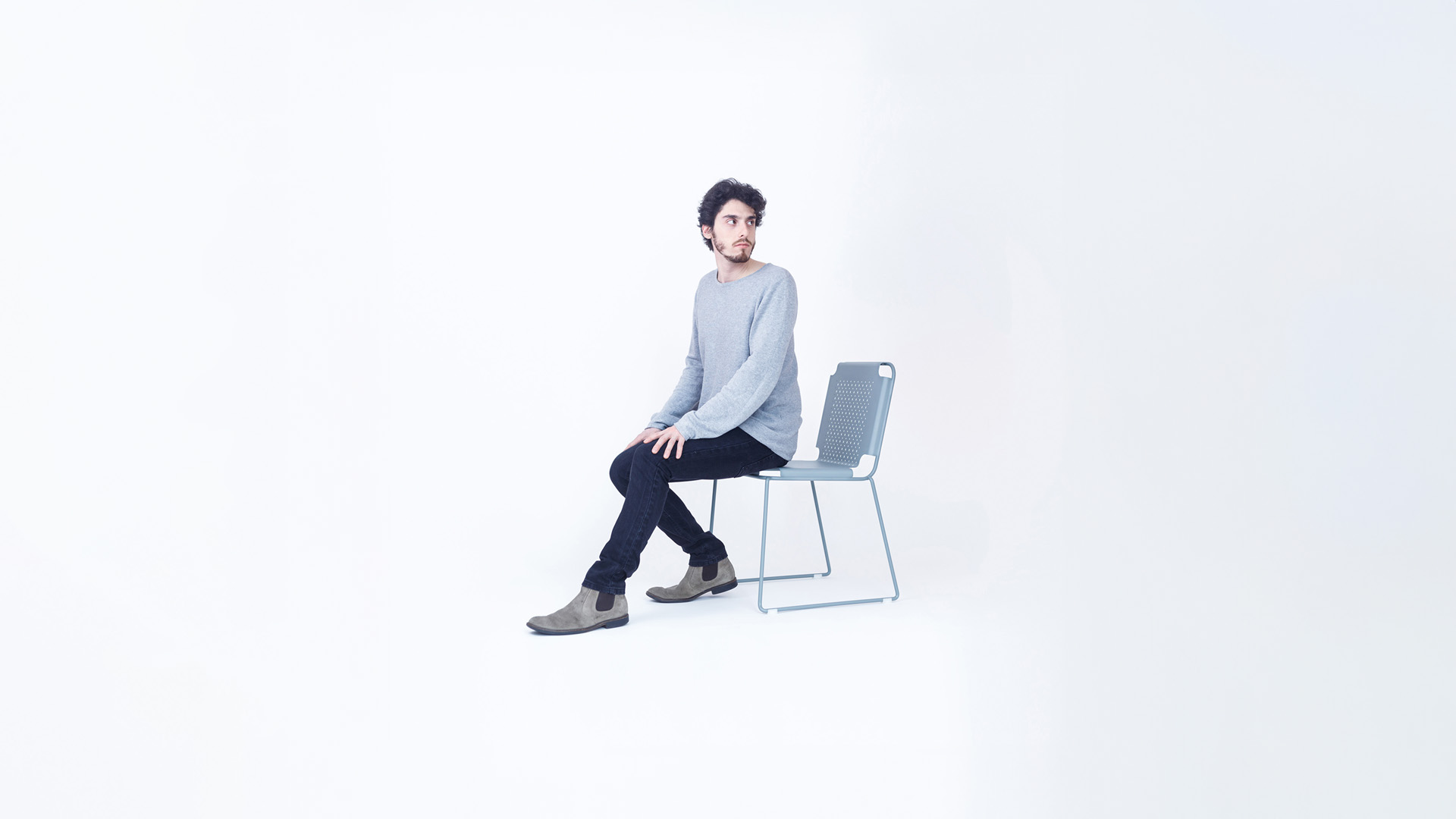Cover photo: BAO City, dining room, ph. Ollie Tomlinson
After a successful run at Hackney’s outdoor market in London, BAO London opened its first permanent restaurant in Soho in 2015. Shing Tat Chung, Erchen Chang, and Wai Ting Chung opened the first BAO London in 2015. Ten years later, the brand has five locations and is celebrating the launch of BAO City, a new venue in the heart of London. «We’re excited to open BAO City, where we can finally realize our dream of recreating a Taiwanese karaoke bar right in the city’s financial district. «The space feels very different from our other restaurants, it’s inspired by the neon-lit Taiwan of the 1980s and 1990s where I grew up», says creative director Erchen Chang.
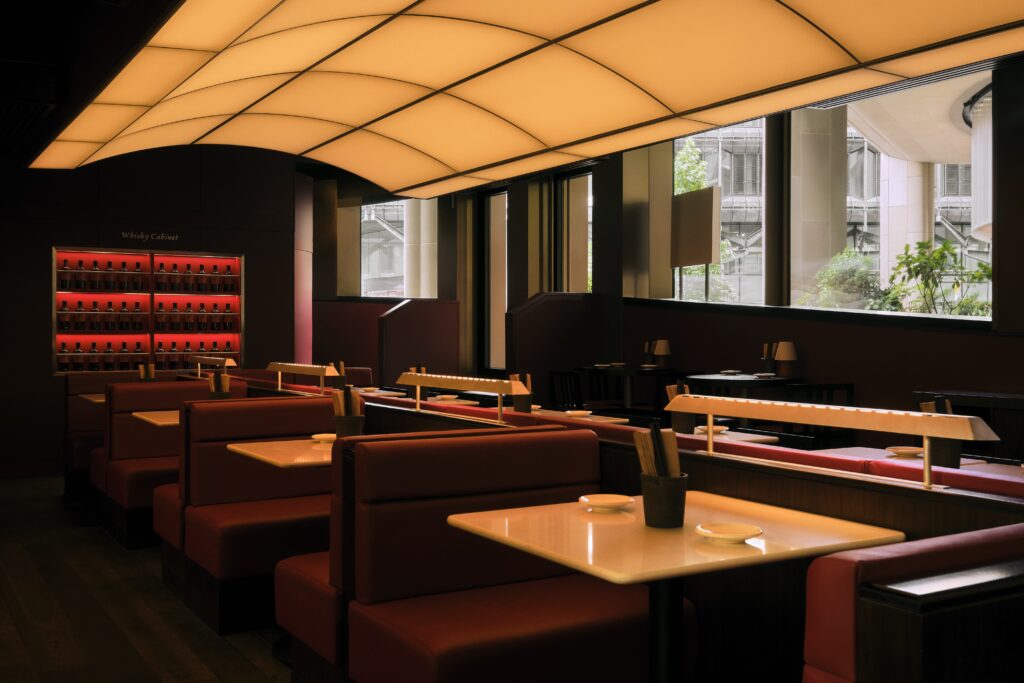
Located within Bloomberg Arcade, the city’s hub for food and culture, the new restaurant offers—alongside BAO’s signature Taiwanese dishes, steamed buns, and xiao chi small plates—a truly immersive KTV (karaoke TV) experience. The space pays homage to both cinematic aesthetics and traditional Taiwanese whisky bars.
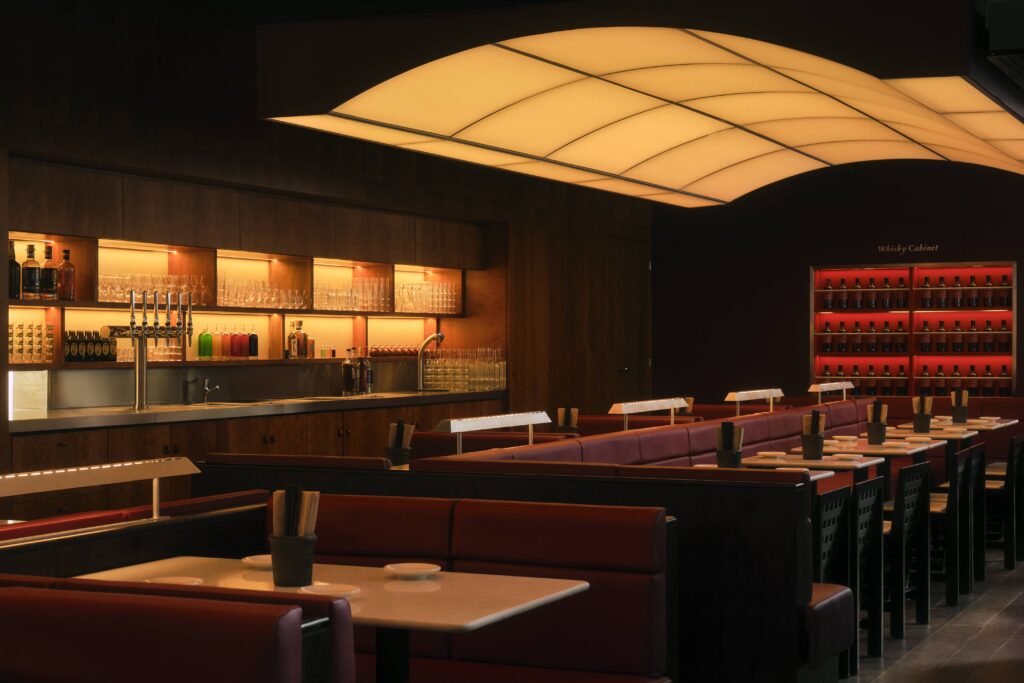
The BAO City project
Designed by the in-house creative team, MATHs, the interior of BAO City blends warmth and sophistication, starting with the lighting. The main dining room features a long, gently curved central lightbox that forms a glowing vaulted ceiling above the tables. Its warm light brings out the richness of the materials: cherry and walnut wood panels, dark red satin walls, and Bordeaux-and-white leather seating.

Each table is also lit by side lamps with soft, rounded geometries, echoing the overall design. Illuminated wall panels in the Whisky Cabinet and bar area add more warm tones to the dining space.
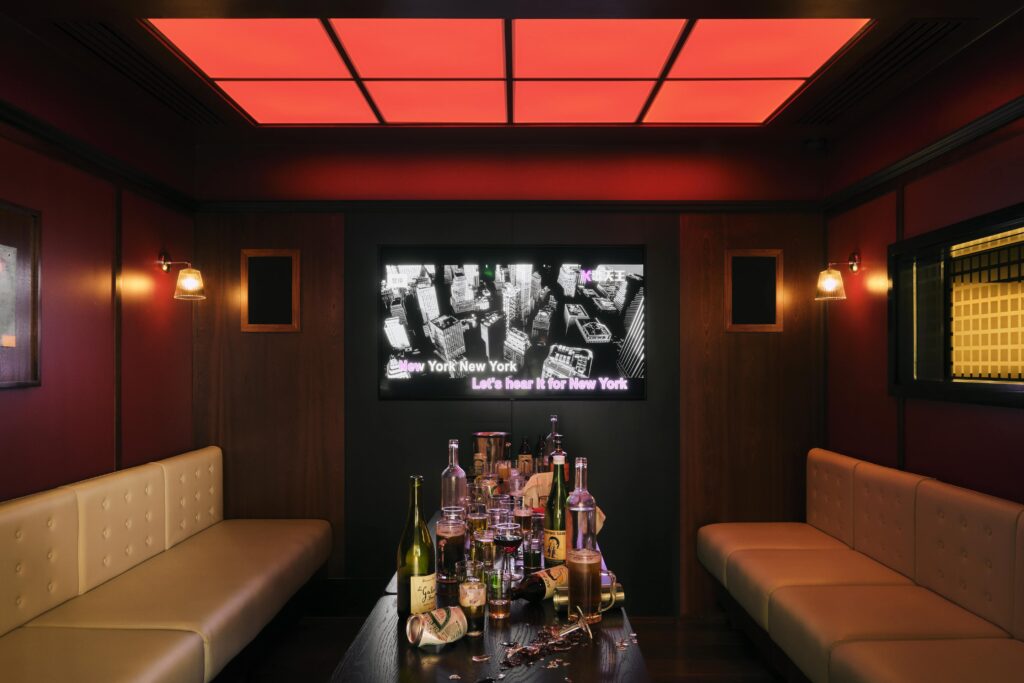
Karaoke, cinema, and whisky bars: BAO London’s parallel worlds
On each side of the main room, there’s a private KTV suite—one designed for 10 guests, the other for up to 22. The first suite takes its cue from Oliver Stone’s Wall Street (1987), a nod to BAO City’s location in London’s financial core. The interiors are styled like a classic 1980s boardroom, with retro finishes, vintage furniture, and red-lit LED ceiling panels that set the karaoke mood.
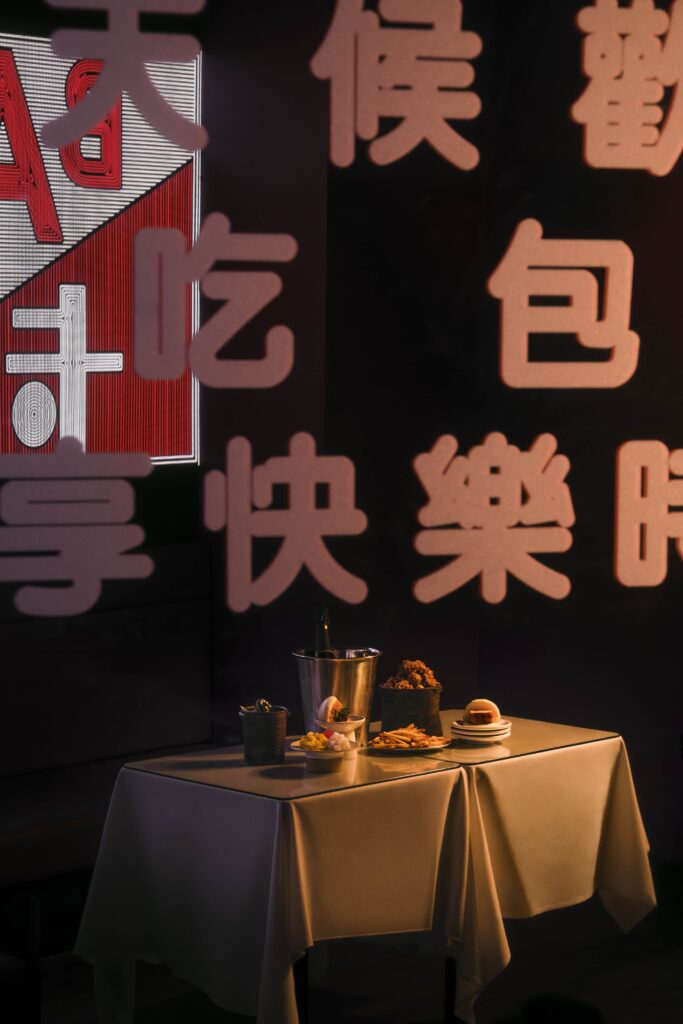

The larger karaoke room, meanwhile, is inspired by Taipei Story (1985) by Edward Yang, set in a fast-modernising Taipei. This space reimagines the scene where the protagonists meet under a Fujifilm billboard, recreated via a custom LED screen evoking fragments of the original logo’s graphics. This room also features red satin walls and leather seats, paired with small tables and warm lighting. Both rooms are visible from the main dining area and available for private bookings.

